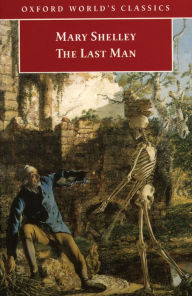Born in London in 1797, Mary Wollstonecraft Shelley was the daughter of William Godwin, a noted social theorist, and Mary Wollstonecraft, one of the leading literary women of the day. Her mother died soon after her birth, and Mary was raised first under the care of servants, then by a stepmother, and lastly in the rarefied intellectual atmosphere of her father’s circle. In May, 1814, she met Percy Bysshe Shelley, and in July of the year moved with him to the Continent. Two years later, after the death of Shelley’s wife, the poet and Mary were able to marry. It was in Switzerland in 1816, as a result of a story-writing competition among the Shelleys and Lord Byron, that Mary began Frankenstein, her first and most famous novel. Published in 1818, it was followed by such works as Valperga (1823), The Last Man (1826), and Falkner (1837). In 1823, after the death of her husband, she devoted herself to the upbringing of her son and the securing of his right to the Shelley family title. She died in 1851.
Douglas Clegg is the award-winning author of more than 25 books, including Neverland, Isis and The Vampyricon trilogy. His fiction encompasses gothic, suspense, fantasy and horror themes. An e-book pioneer, he created the internet’s first e-serial novel, Naomi, which was released in 1999.
Harold Bloom, the country’s preeminent literary critic, is Sterling Professor of the Humanities and English at Yale University. He is the recipient of numerous honors and awards, including the Gold Medal of the American Academy of Arts and Letters. Among his most important books are The Anatomy of Influence: Literature as a Way of Life and How to Read and Why.
Frankenstein (with an Introduction by Sir Walter Scott)
Paperback
- ISBN-13: 9781420951561
- Publisher: Neeland Media
- Publication date: 06/17/2015
- Pages: 170
- Product dimensions: 5.50(w) x 8.50(h) x 0.39(d)
- Age Range: 18Years
What People are Saying About This
Choose Expedited Delivery at checkout for delivery by. Monday, December 2
Mary Shelley's "Frankenstein" is the story of Victor Frankenstein, a young scientist who through a strangely unorthodox experiment creates a grotesque yet sentient being. Victor, repulsed by the thing that he has created, abandons the monster. The creature in turn saddened by this rejection, departs as well. What follows is a series of tragic events. There is no greater novel in the monster genre than "Frankenstein" and no more well known monster than the one that is at the center of this novel. However, the monster of "Frankenstein" is more than the common lumbering moronic giant that is most often represented. Frankenstein's monster is in reality a thinking intelligent being who is tormented by a world in which he does not belong. In this depiction Shelley draws upon the universal human themes of creation, the nature of existence, and the need for acceptance. For it is without this acceptance that the true monster, the violent nature of humanity, emerges. This edition is printed on premium acid-free paper and includes introductions by Sir Walter Scott and Mary Shelley.
Customers Who Bought This Item Also Bought
-
- The Exile
- by William Kotzwinkle
-
- The Last Man
- by Mary ShelleyMorton D. Paley
-
- The World My Wilderness
- by Rose MacaulayPenelope Fitzgerald
-
- The Adventures of Sherlock…
- by Arthur Conan Doyle
-
- The Voyage of the Paper Canoe:…
- by Nathaniel H. Bishop
-
- The H.G. Wells Collection
- by H. G. Wells
Recently Viewed
This Modern Library edition includes a new Introduction by Wendy Steiner, the chair of the English department at the University of Pennsylvania and author of The Scandal of Pleasure.
Mary Shelley was born Mary Wollstonecraft Godwin in 1797 in London. She eloped to France with Shelley, whom she married in 1816. After Frankenstein, she wrote several novels, including Valperga and Falkner, and edited editions of the poetry of Shelley, who had died in 1822. Mary Shelley died in London in 1851.






